When most people think of koalas, they envision adorable, fluffy creatures hugging eucalyptus trees and sleeping the day away. While these iconic Australian marsupials are indeed charming, there’s much more to them than meets the eye. Wild koalas have fascinating adaptations, complex behaviors, and face significant challenges in their natural habitat. Beyond the cuddly exterior lies a remarkable animal that has evolved unique traits to survive in Australia’s diverse ecosystems. Let’s explore twelve surprising facts about wild koalas that showcase just how extraordinary these beloved creatures truly are.
12. Koalas Are Not Actually Bears
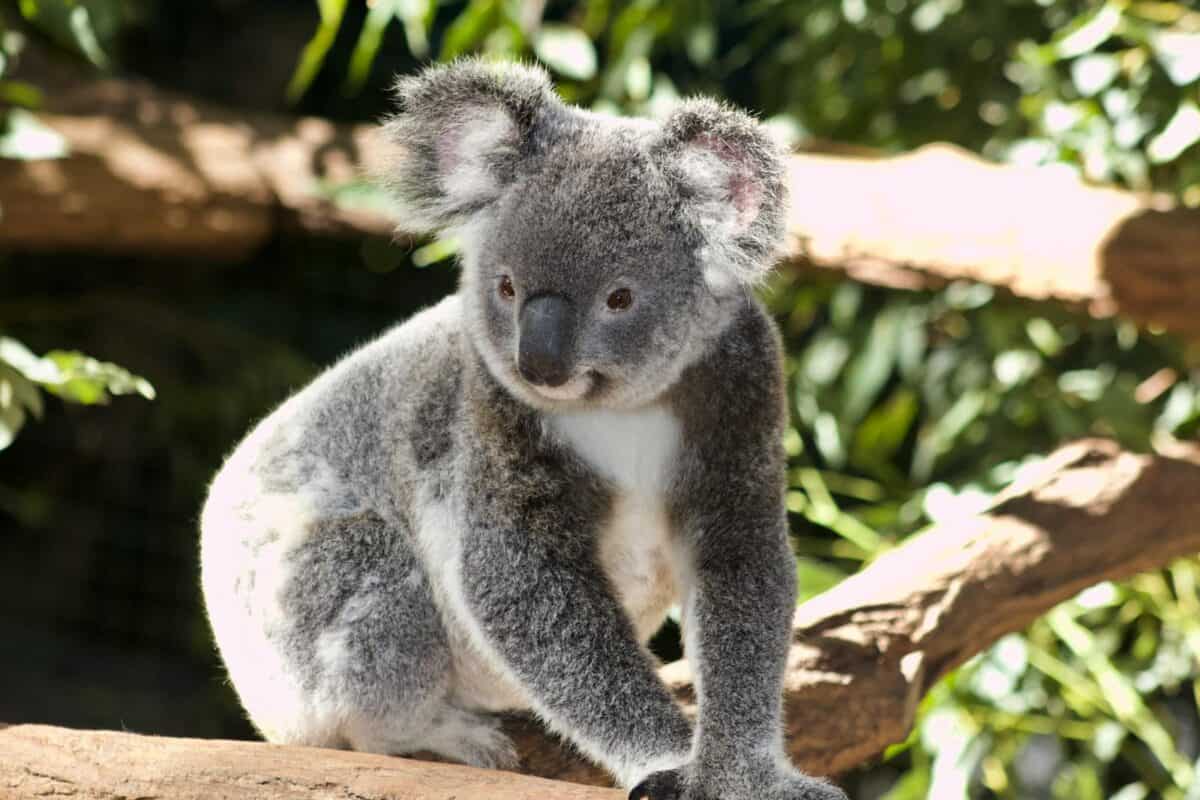
Despite commonly being called “koala bears,” koalas (Phascolarctos cinereus) are not bears at all. They are marsupials, meaning they belong to the same family as kangaroos and wombats. The confusion dates back to European settlers who thought these tree-dwelling animals resembled bears. Unlike placental mammals such as actual bears, female koalas have pouches where their underdeveloped young, called joeys, complete their development after birth. This fundamental biological difference places koalas in an entirely separate mammalian infraclass called Marsupialia, making them more closely related to opossums than to any bear species.
11. Koala Fingerprints Are Nearly Identical to Human Ones
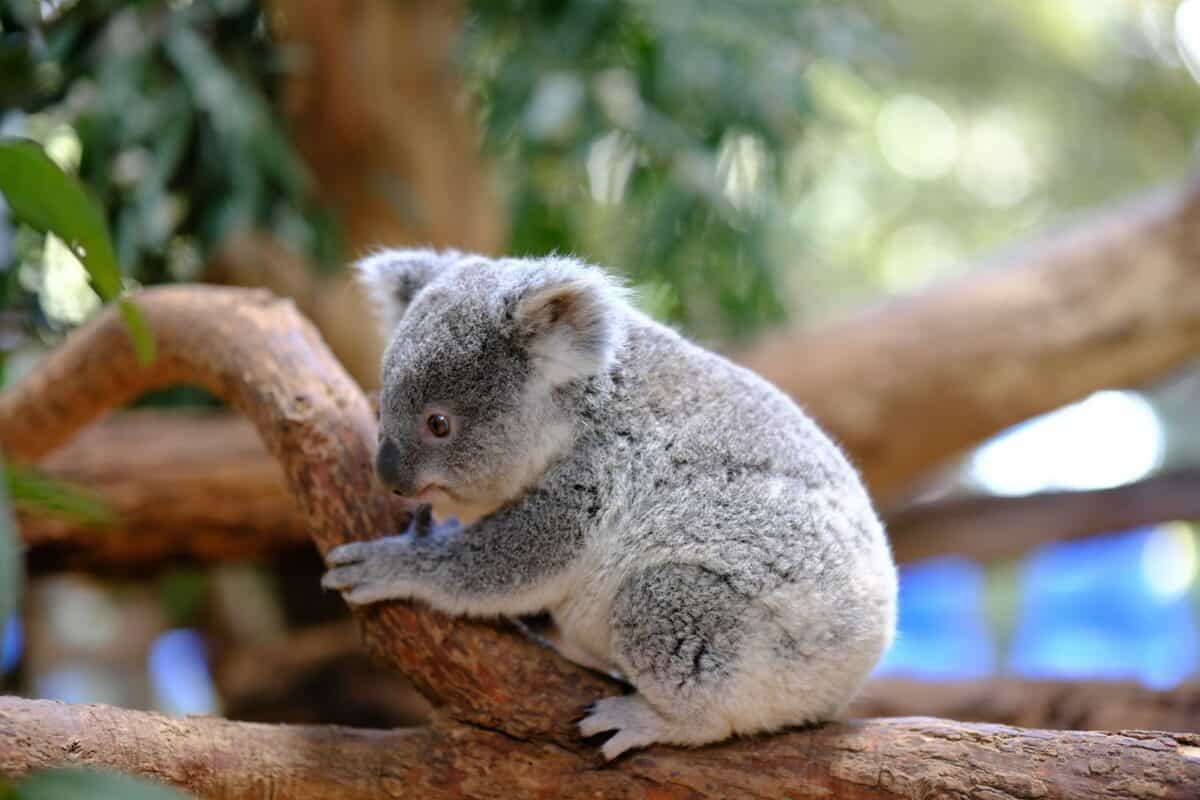
In an extraordinary biological coincidence, koalas have fingerprints that are virtually indistinguishable from human fingerprints, even under an electron microscope. This remarkable similarity evolved independently, as koalas and humans last shared a common ancestor about 70 million years ago. Like human fingerprints, each koala’s prints are unique to the individual. These distinctive ridges and whorls evolved to help koalas grip smooth eucalyptus branches and navigate their arboreal lifestyle. This convergent evolution phenomenon has fascinated scientists and has even led to koala prints confusing crime scene investigators in Australia when they’ve unknowingly collected koala prints at outdoor crime scenes.
10. Koalas Sleep Up to 22 Hours Daily
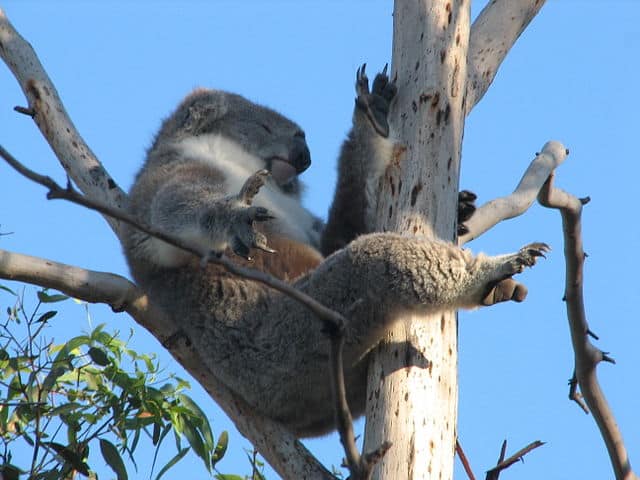
Koalas have earned their reputation as one of the sleepiest animals on the planet, snoozing for up to 22 hours per day. This extreme sleep requirement isn’t laziness—it’s a necessary adaptation to their specialized diet. Eucalyptus leaves, their primary food source, contain very little nutrition and are high in fiber and toxic compounds. The koala’s slow metabolism and energy conservation strategy through extensive sleep allows them to process this challenging diet efficiently. Their digestive system works hard during these long rest periods to extract limited nutrients and detoxify the eucalyptus oils. Even during their brief waking hours, koalas move slowly and deliberately to conserve precious energy reserves.
9. Baby Koalas Eat Their Mother’s Poop

One of the most startling koala facts concerns their unique dietary introduction. When joey koalas transition from milk to solid food around 6-7 months of age, they don’t immediately start eating eucalyptus leaves. Instead, they consume a special type of their mother’s fecal matter called “pap.” This substance is different from normal feces and contains the specialized gut bacteria necessary for digesting toxic eucalyptus leaves. Without this bacterial transfer, young koalas would be unable to process their adult diet. This behavior, called coprophagy, is a crucial adaptation that ensures joeys develop the proper digestive microbiome to handle the toxic compounds in eucalyptus. The process typically lasts several weeks until the joey’s digestive system is properly colonized.
8. Koalas Have Specialized Chewing Adaptations
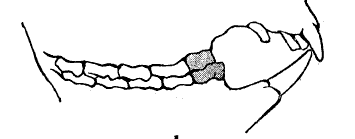
Koalas possess remarkably specialized teeth and jaw structures perfectly adapted to their fibrous eucalyptus diet. Their dental formula includes sharp incisors for initial leaf gripping and large, ridged molars for grinding tough eucalyptus into a digestible paste. What’s particularly fascinating is the significant gap between their incisors and molars called a diastema, which allows them to efficiently process plant material. Their powerful jaw muscles can generate tremendous force, enabling them to break down fibrous material that would be indigestible to most mammals. Additionally, koalas have continuously growing molars to compensate for the extreme wear caused by their abrasive diet, allowing them to effectively process up to one pound of eucalyptus leaves daily throughout their lifetime.
7. Koalas Have Incredibly Selective Diets
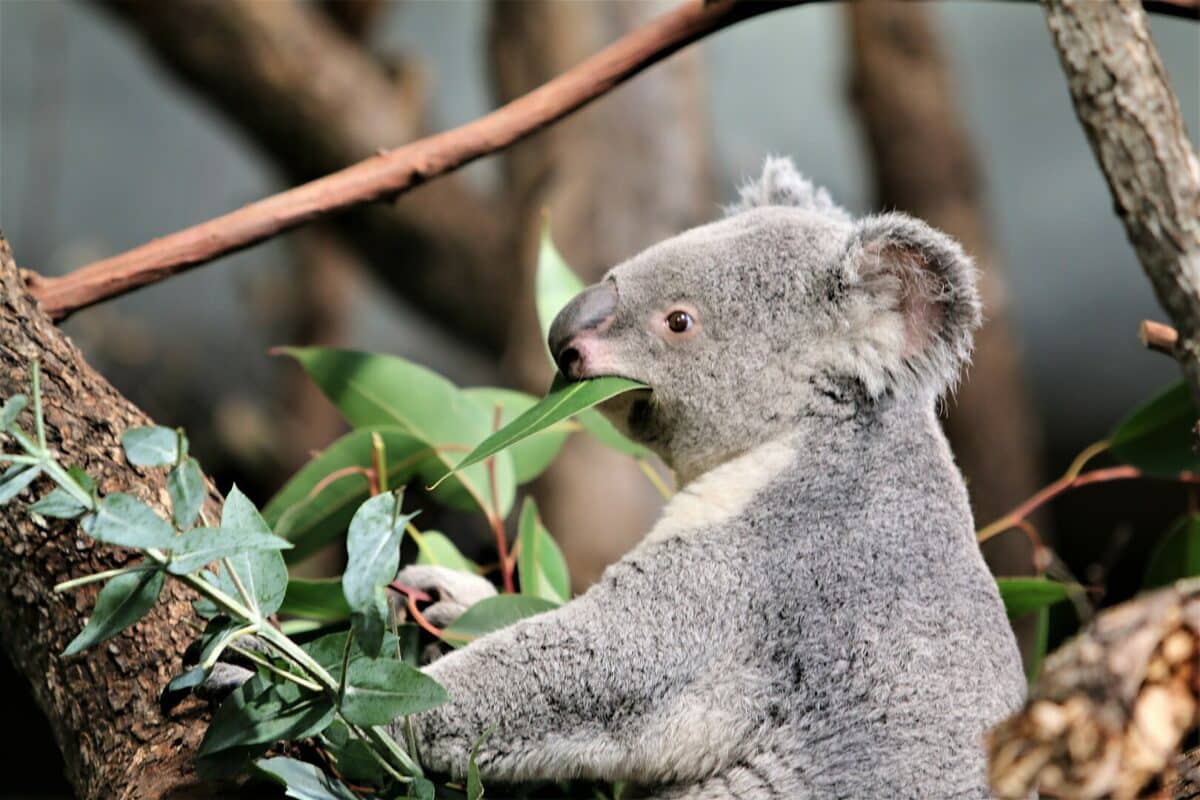
While it’s well-known that koalas eat eucalyptus leaves, few realize just how extraordinarily selective they are about their meals. Australia is home to over 700 eucalyptus species, yet koalas regularly feed on only about 30 species and strongly prefer just a handful of these. Even more surprising, individual koalas can recognize their preferred eucalyptus varieties by scent and will reject leaves from trees that contain higher levels of certain toxic compounds. This selectivity extends to preferring leaves from specific trees within the same species based on soil conditions that affect leaf chemistry. Research has shown that koalas can detect differences in leaf water content, nutritional value, and toxin levels that are imperceptible to humans, making them among the most specialized herbivores on the planet.
6. Male Koalas Have a Unique Scent Gland

Adult male koalas possess a distinctive dark, oval-shaped scent gland in the center of their chest that resembles a dirty patch. This specialized organ produces a strong, musky secretion that males use to mark their territory and attract females during breeding season. The scent contains a complex mixture of over 40 chemical compounds that communicate vital information about the male’s identity, health status, social rank, and breeding readiness. Interestingly, each male has a unique chemical signature, similar to a pheromone fingerprint. During mating season, males become particularly active in marking their territories, rubbing their chest glands vigorously against tree trunks and branches. The resulting scent marks can last for months and create an olfactory map of koala territories across their habitat.
5. Koalas Have Backward-Facing Pouches

Unlike kangaroos and most other marsupials that have pouches opening toward their head, koalas have evolved pouches that open downward and backward toward their hindquarters. This reversed orientation is a crucial adaptation to their tree-climbing lifestyle. The backward-facing pouch prevents debris from entering while the mother koala climbs trees and digs for food. It also securely holds the developing joey as the mother moves through the forest canopy. Inside the pouch are two teats that produce different types of milk simultaneously to meet the changing nutritional needs of the developing joey. This specialized pouch design is shared with wombats, their closest living relatives, who similarly benefit from this adaptation as burrowing animals.
4. Koalas Have Specially Adapted Hands and Feet
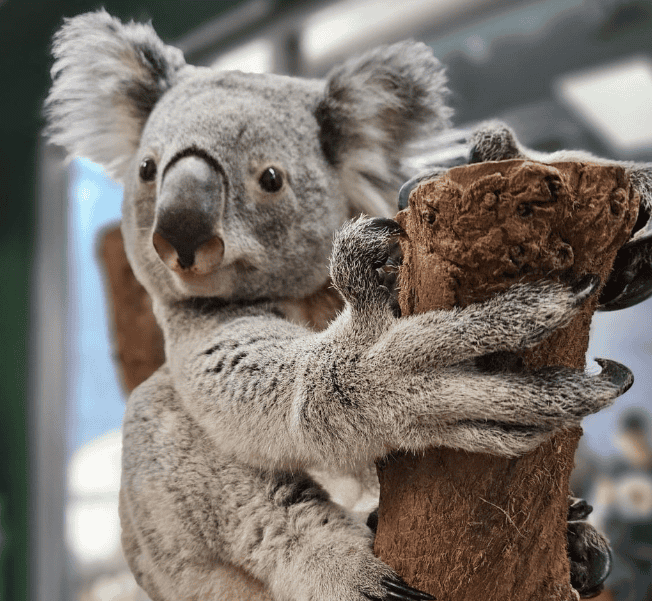
Koalas possess remarkably specialized limbs that reveal their evolutionary adaptation to arboreal life. Their hands feature two opposable thumbs alongside three fingers, creating a powerful pincer-like grip ideal for clutching branches. This unusual hand structure allows them to maintain a secure hold even while sleeping or during strong winds. Their feet have an opposable big toe without a claw, which functions almost like a human thumb for gripping, while the second and third toes are fused together with a double claw used specifically for grooming and removing ticks. Additionally, koalas have rough pads and extra-long curved claws on their hands and feet that provide exceptional traction on smooth eucalyptus bark. These adaptations enable koalas to climb up to 150 feet high in forest canopies and navigate between trees with remarkable agility despite their seemingly cumbersome build.
3. Koalas Have Specialized Water-Conserving Adaptations

One of the most remarkable aspects of koala physiology is their relationship with water—or rather, their ability to avoid needing it. Wild koalas rarely drink water, obtaining nearly 90% of their hydration directly from eucalyptus leaves. Their name actually derives from an Aboriginal term meaning “no drink.” Koalas have evolved extraordinarily efficient kidneys that extract maximum moisture from their food and produce highly concentrated urine to conserve water. During normal conditions, a healthy koala can go its entire life without drinking free-standing water. They only resort to drinking from streams or artificial water sources during extreme drought or heat waves. This water-conserving adaptation allows koalas to thrive in Australia’s variable climate and reduces the risk associated with descending to ground level where they would be vulnerable to predators.
2. Koala Populations Are Genetically Diverse

Contrary to their similar appearance to casual observers, koala populations across Australia exhibit significant genetic diversity and adaptation to local conditions. Northern koalas in Queensland are smaller (around 12 pounds) with shorter, lighter fur adapted to warmer climates, while southern koalas in Victoria can reach nearly 30 pounds with thicker, darker coats suited for cooler weather. These populations have been isolated long enough to develop distinct genetic profiles, with some researchers suggesting they may represent different subspecies. This genetic diversity extends to behavioral adaptations, such as different vocalizations, mating calls, and food preferences based on regional eucalyptus varieties. Unfortunately, human development has fragmented koala populations, creating isolated genetic islands that threaten their adaptability and long-term survival, making conservation efforts focused on maintaining genetic connectivity increasingly crucial.
1. Koalas Face Unique Health Challenges

Wild koalas battle an unusual array of health challenges beyond habitat loss, including a surprisingly high prevalence of chlamydia infection that affects up to 100% of some populations. This bacterial disease can cause blindness, infertility, and death in koalas, significantly impacting their conservation status. Researchers have discovered that a retrovirus called KoRV (Koala Retrovirus) is actively inserting itself into the koala genome in real-time—a rare example of observing evolution in action—potentially compromising their immune systems. Additionally, koalas frequently suffer from a unique form of dementia caused by age-related brain changes similar to Alzheimer’s disease in humans, and they experience disproportionately high rates of certain cancers. These health vulnerabilities, combined with external threats like vehicle strikes, dog attacks, and habitat fragmentation, have contributed to koalas being officially classified as endangered in eastern Australia in 2022 after a 30% population decline in just three years.
Wild koalas are far more complex and fascinating than their cuddly appearance and sleepy reputation might suggest. From their remarkable fingerprints and specialized digestive systems to their unique evolutionary adaptations and health challenges, these iconic Australian marsupials deserve our attention and protection. Understanding the surprising realities of koala biology and behavior helps us appreciate how extraordinarily adapted they are to their ecological niche, while also highlighting the vulnerabilities that threaten their survival. As climate change, habitat destruction, and disease continue to impact koala populations, this deeper knowledge becomes increasingly important for effective conservation efforts. By appreciating these twelve surprising facts about wild koalas, we gain not just fascinating trivia, but crucial insight into preserving one of Australia’s most beloved and ecologically important species for future generations.
- 12 Surprising Facts About Wild Koalas You Didn’t Know - August 11, 2025
- How Honeybees Use Complex Dance Languages to Communicate - August 11, 2025
- 10 Animals With Bizarre Abilities That Seem Like Science Fiction - August 11, 2025

